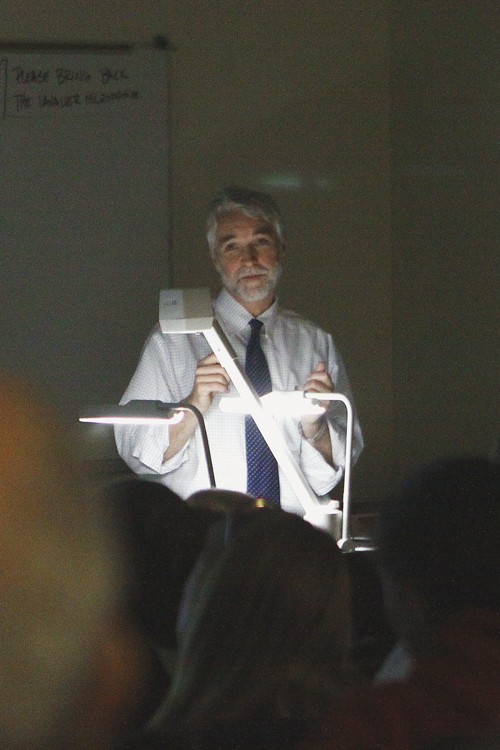At a critical time for the global environment, the National Science Foundation is combining the efforts of researchers from various fields of geosciences to answer some of our planet’s pressing environmental issues.
Timothy Killeen, the assistant director of geosciences for the National Science Foundation, gave his first lecture at the UA Thursday in the Cesar Chavez building evening that highlighted the NSF’s current environmental concerns and research goals.
“”The NSF is working to address the nation’s need to understand, predict, and respond to environmental pressures,”” Killeen said.
Increasing atmospheric and oceanic temperatures, dwindling water resources, and the effects of explosive population growth and development throughout the world are just a few of the problems that Killeen said geoscience research could help to solve.
“”In Shanghai, China pollution levels are now quickly going from relatively safe to dangerous, the effects of which will make its way across the ocean and impact the United States,”” he said. “”We are all in this together.””
In order to address these issues, the NSF is conducting and funding research into how the earth functions as a system. Ranging from what happened in the earliest part of the earth’s planetary history to analyzing trends in the salinity of the earth’s oceans, geosciences is a large and growing field that presents numerous intellectual challenges to those who choose to pursue it.
“”If your looking for an intellectual challenge, you might look towards geosciences,”” said Killeen.
Killeen stressed the importance of developing better methods to predict climate models for the atmosphere and oceans. In order to do this the NSF is utilizing a growing network of scientists, super computers and field equipment to predict and interpret important trends and shifts in data.
Geosciences received more than 20 percent of the three billion dollars given to the NSF through President Barack Obama’s federal stimulus package, money that Geosciences is distributing into the economy by funding research initiatives, graduate studies, and faster and more accurate climate models.
Two of the larger projects the NSF is currently funding are the Alaska Region Research Vessel and a system of ocean observatories.
“”We are going to build the Alaska Region Research Vessel that will be the first new ship in the academic fleet in 30 years,”” said Killeen. The vessel will have onboard sensors to measure trends and statistics gathered from the arctic oceans, he said, adding that a series of ocean observatories will monitor salinity, carbon flux and other data. Together, the projects will cost a total of $254 million.
Killeen said some of the most significant changes in the short term global environment will be determined by the availability of water resources in the global system. Research that the UA is a world leader in.
“”The UA is the number one university in the world for hydrology research,”” said geosciences regent professor George Davis.
For students not pursuing a science related career, Killeen stressed the importance of obtaining a basic understanding of environmental science. “”We are a transitional generation, every future generation needs to know that we are in a finite planet,”” he said.









